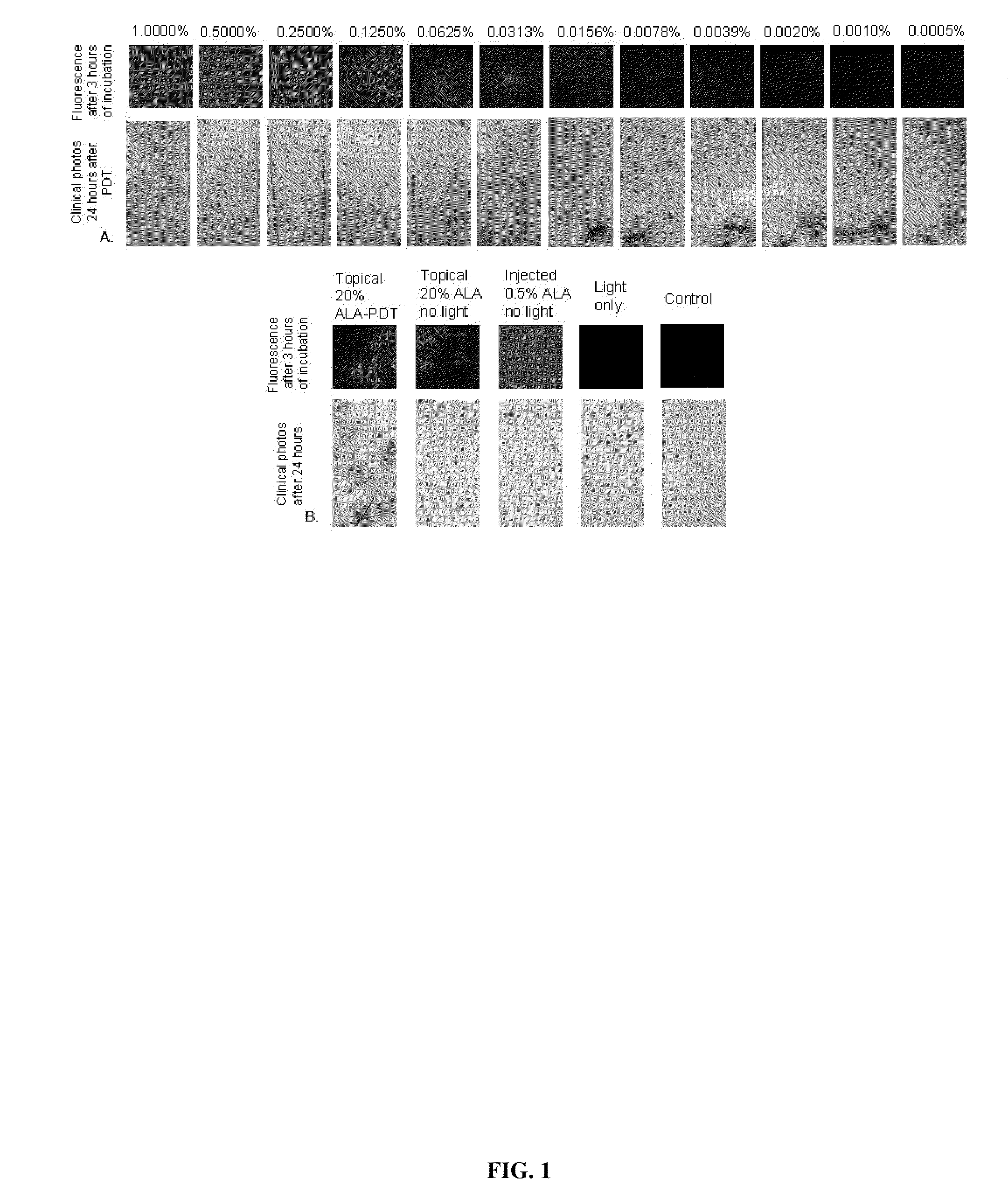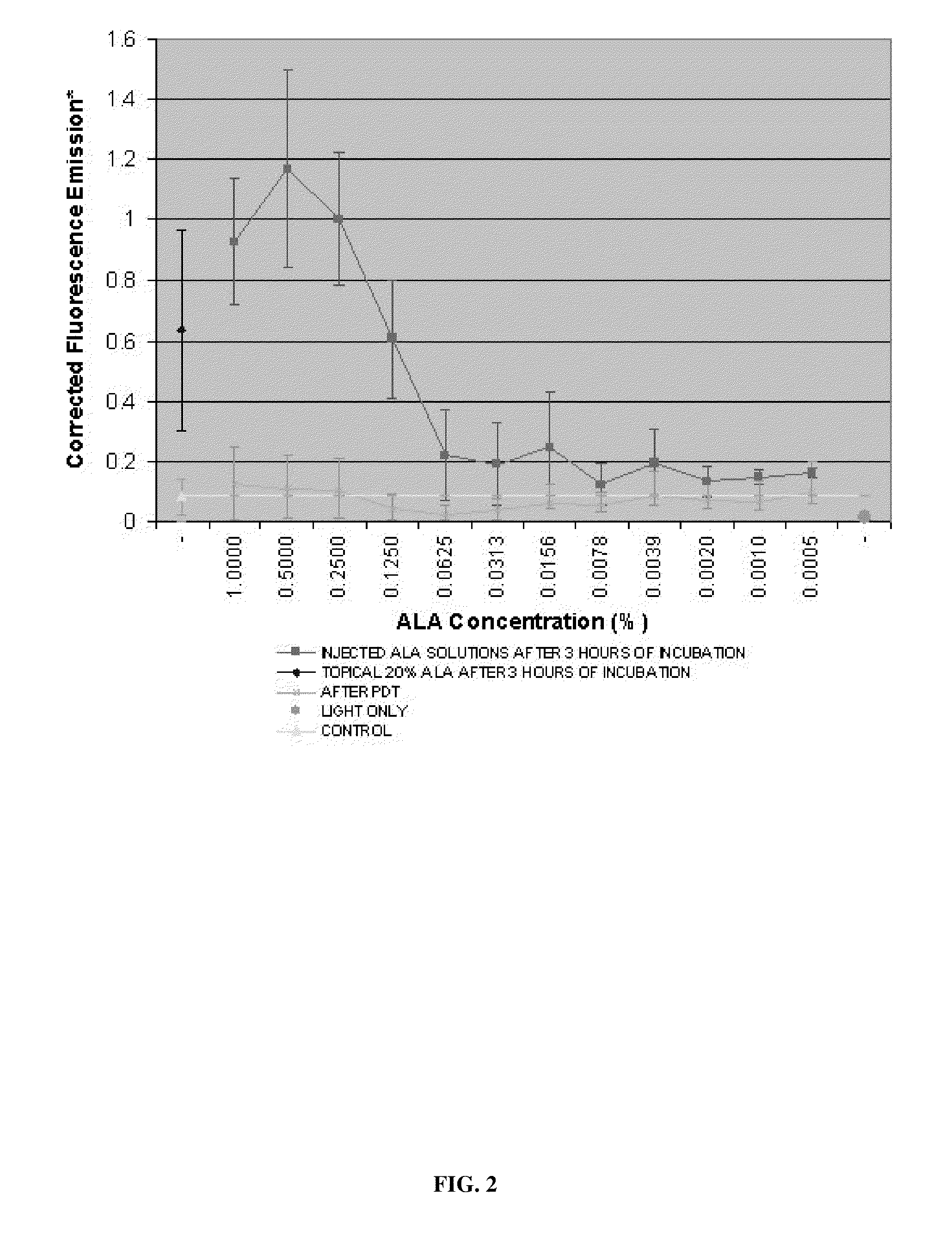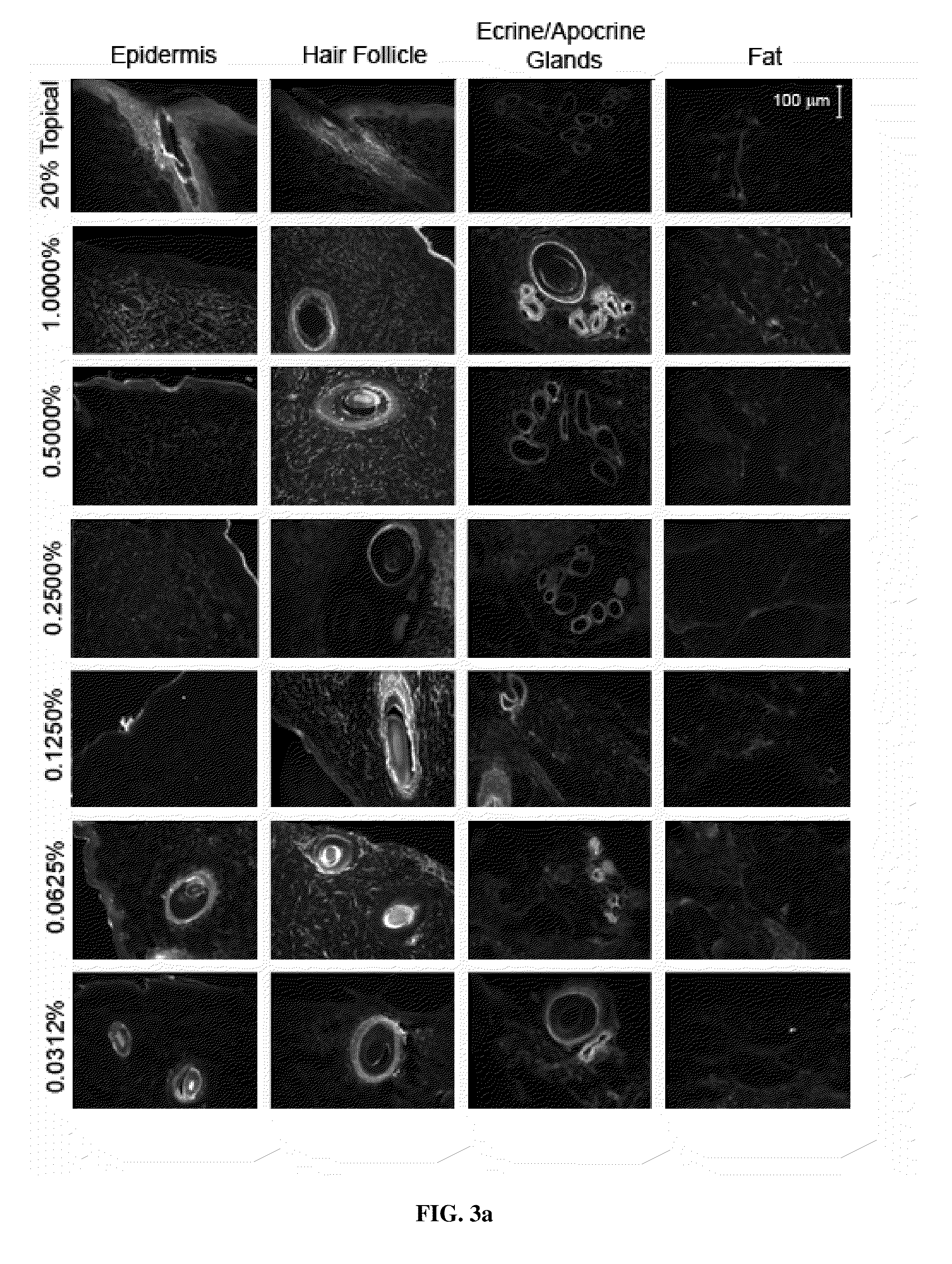Methods and compositions for dose-dependent photodynamic therapy of disorders
a dose-dependent, photodynamic therapy technology, applied in the direction of drug compositions, peptide/protein ingredients, therapy, etc., can solve the problems of destroying the proliferative potential of pdt, affecting the effect of vascular pdt reaction, and current pdt methods are not easily targeted to specific regions or microanatomical structures of the skin. achieve the effect of potent vascular pdt reaction
- Summary
- Abstract
- Description
- Claims
- Application Information
AI Technical Summary
Benefits of technology
Problems solved by technology
Method used
Image
Examples
example 1
[0148]Photodynamic therapy (PDT) consists of activating a photosensitizer that targets specific pathways, cells or structures. Aminolevulinic acid (ALA), the first committed precursor of heme synthesis, is used as a topical agent for PDT following the first description by Kennedy and colleagues (Kennedy et al. 1990). Metabolism of ALA leads to accumulation of porphyrins, notably the potent photosensitizer protoporphyrin IX (PpIX). In the presence of oxygen and light, PpIX transfers energy to generate singlet oxygen (1O2), a potent oxidizing agent. Topical ALA-PDT is known in the art. ALA-PDT has also been used as a cosmetic for the rejuvenation of photodamaged skin.
[0149]The distribution of tissue structures affected by PDT is determined by a combination of photosensitizer, light and oxygen distributions. Most of the light sources used for ALA-PDT emit blue or red light related to absorption bands of PpIX. For the common treatment of actinic keratoses, blue light and topical ALA are...
PUM
| Property | Measurement | Unit |
|---|---|---|
| Fraction | aaaaa | aaaaa |
| Fraction | aaaaa | aaaaa |
| Fraction | aaaaa | aaaaa |
Abstract
Description
Claims
Application Information
 Login to View More
Login to View More - R&D
- Intellectual Property
- Life Sciences
- Materials
- Tech Scout
- Unparalleled Data Quality
- Higher Quality Content
- 60% Fewer Hallucinations
Browse by: Latest US Patents, China's latest patents, Technical Efficacy Thesaurus, Application Domain, Technology Topic, Popular Technical Reports.
© 2025 PatSnap. All rights reserved.Legal|Privacy policy|Modern Slavery Act Transparency Statement|Sitemap|About US| Contact US: help@patsnap.com



